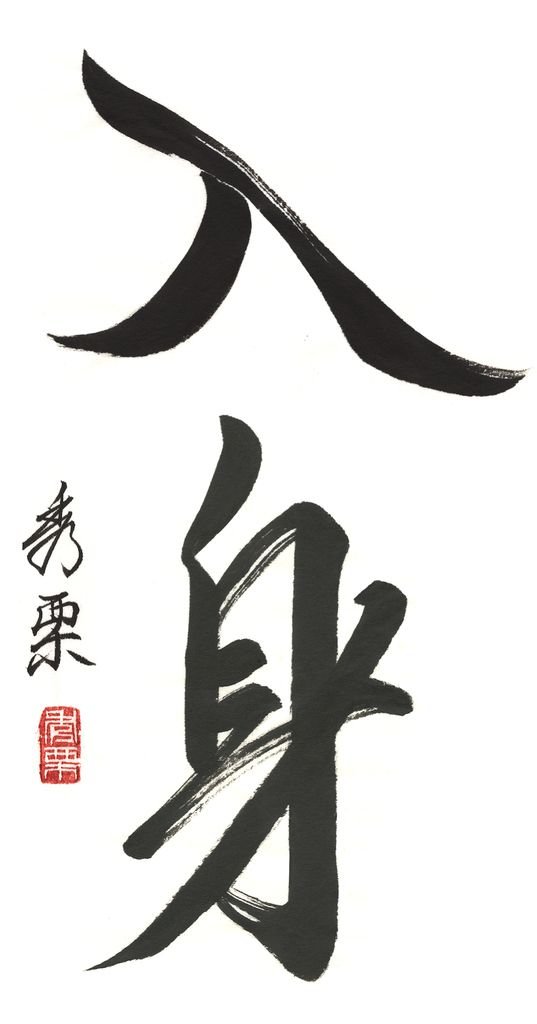Irimi: a matter of nature
The yudansha of our club were asked to write a short essay for John Stevens sensei. For the nidan candidates, the assignment was to discuss one of the pillars of Aikido. This is my paper.
Irimi, executed to perfection by Nishio shihan.
Step in or back off, go left or right, front or back, soft or hard, cut off the attack before it has started or move in when it's already fading out? We make a lot of decisions on the spot when we execute a technique and move spontaneously. All in the blink of an eye, without a single thought crossing our minds.
Most of the time however, these choices are determined for us, because of the exercise at hand. Sensei will instruct his students whether to practice omote or ura, tenkan or irimi. And rather than understanding or feeling the intention and direction of the technique, students will try to imitate the movement as much as they can.
This is a very mechanical phase in the learning process, and much like we once learnt to write the alphabet in primary school, it is probably a good idea to learn this in a standardised way.
But much like being able to shape letters doesn’t make you a writer, or the ability to produce notes on a piano doesn’t make you a musician, nobody ever became a martial artist by carbon-copying his teacher’s movements.
Irimi: calligraphic study by Pascal Krieger.
Once our muscles remember synchronised movements, once we are able to reproduce a form, we should try to express ourselves with it. Movements should become a natural response to the situation that is presenting itself. And you can only move naturally if the movement is true to your nature.
When uke confronts us, the choices we make instinctively, define who we are. In a martial context, these choices may even define whether we are.
To be or not to be really becomes the question under a falling sword.
Over more than three decades on the tatami, I’ve learnt a couple of things about my nature. Granted: I’m a slow learner.
I’ve learnt that under the pressure of an attack, I tend to confront. Not out of bravery, not because of some moral choice. It is just what happens when I’m under pressure and don’t think.
In the past, that meant frontally crashing into the opponent. If I was lucky, or bigger, or faster, that gave me the upperhand. If I was not lucky, strong or fast enough, the outcome would invariably be painful. Aikido showed me irimi. The way of entering the danger zone without getting hurt.
I learnt that there are two safe places in a hurricane: in the eye of the storm or outside of its reach. That is in essence the difference between tenkan and irimi. For a long time, tenkan for me felt like unnecessary movement, because at the end of the day, you would have to enter and engage with uke. For me, tenkan was actually the art of dancing around the conflict.
Today, I think of neither irimi or tenkan as strong or weak. Actually, I’ve learnt to appreciate the advantages of tenkan when you are confronted with a powerful attack.
Today, I think of irimi and tenkan as directions towards a goal. One path may be steeper, the other may seem longer. But both are valid and will get you to your destination. The one that you prefer is a matter of your nature.
Irimi is my choice.
Because irimi is my nature.

